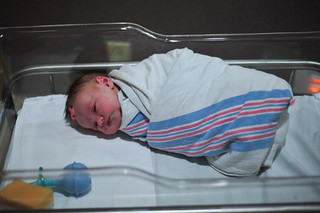For many busy women, keeping track of birth control is one more thing to program into the “reminder” section of their iPhone and starting a family may be the farthest thing from their minds. For many young women, a commitment to a career comes first, as well as a trustworthy, hassle-free birth control option. For those women, Mirena, an intrauterine contraceptive is the seemingly perfect option, as it is 99% effective in pregnancy prevention and can be used up to 5 years. Many Mirena users choose the long term birth control to feel free from other alternatives such as birth control, pills, cervical caps, NuvaRing, and condoms. With approximately 2 million users in the U.S., the birth control option must be a great choice for some, but Mirena users should remain aware of the dangerous and potentially deadly side effects.
What does Mirena do?
Mirena is a t-shaped hormonal intrauterine device (IUD) that is inserted into the uterus and releases a type of progestin, which prevents pregnancy. Many women opt for a long-term birth control because it makes them feel more in control of their own reproductive health, rather than worrying about the effectiveness of daily birth or “one-time-use” birth control. According to Planned Parenthood, many women prefer Mirena because it allows spontaneity and the possibility of an improved sex life. While it’s always wise to have a discussion with a sexual partner, there is less stress and pressure about protection. Additionally, many women who suffer from severe menstrual cramping find relief with Mirena, as it reduces menstrual cramps and menstruation. But, Mirena is not necessarily the ideal, “keep life simple” birth control that it claims to be.
In fact, the FDA issued two warning letters, alerting Mirena users that the makers of Mirena (the Bayer Corporation) were down playing the serious risks associated with the IUD. In its television advertising, Mirena’s target audience is women who are already mothers. The busy mothers scurry around chasing challenging children and the woman stops to say, “I’m fine with two children, but maybe someday I’ll want more”. If a mother is busy with her children and life, in general, how will she manage is she suffers from some of Mirena’s serious side effects?
If you still take Mirena, Consider the Side Effects
IUDs require a commitment and a financial investment, which may be too risky for women considering Mirena. Additionally, women should always consult their physician before having an IUD inserted and discuss side effects and other health risks. The most common side effects and seemingly harmless effects of Mirena include headaches, acne, breast tenderness, weight gain, and ovarian cysts.
Women should avoid Mirena if they have or have had any experience with:
– Breast, Uterine or Cervical Cancers
– Uterine abnormalities
– Previous issues with an IUD
– At High Risk of STDs
Women should also take to their doctor about the following medical conditions, as conditions could worsen or in some cases, fatal:
– High Blood Pressure
– Heart Conditions or a history of a heart attack
– Migraines
– Stroke
– Blood clots (such as DVT or PE)
Some Mirena users found that their IUD expelled from the uterus. If a woman becomes pregnant while the IUD is unknowingly dislodged, a careful decision must be made on the continuation of pregnancy as there can be severe risks to the unborn child and the woman.
Even the television ads make Mirena seem like it’s the perfect birth control alternative for the “super mom” or the “career girl”, it’s not for everyone. Women, when considering Mirena, must think carefully and seriously about the financial investment, the long term commitment and the risks to health. Mirena does anything but “keep life simple”.
 Choosing a personal injury attorney can be difficult.
Choosing a personal injury attorney can be difficult.
